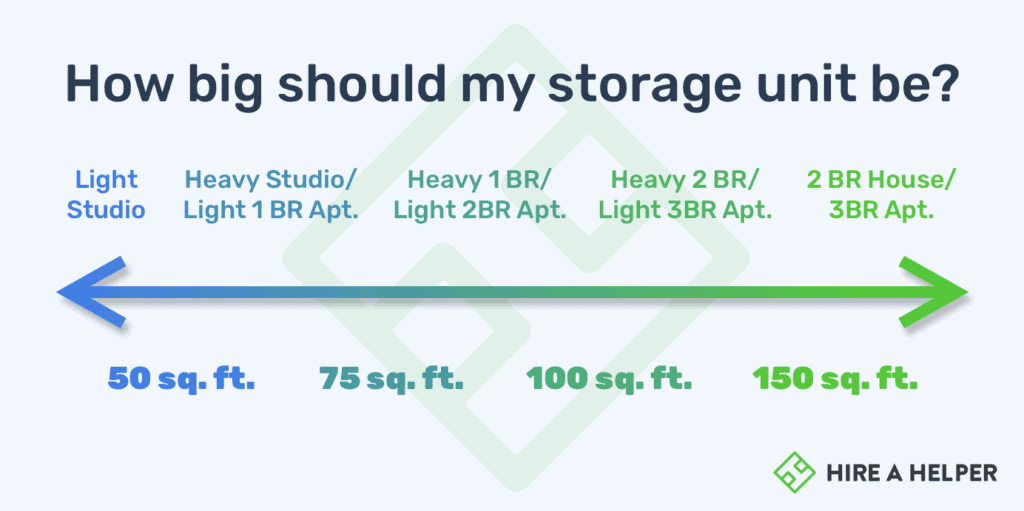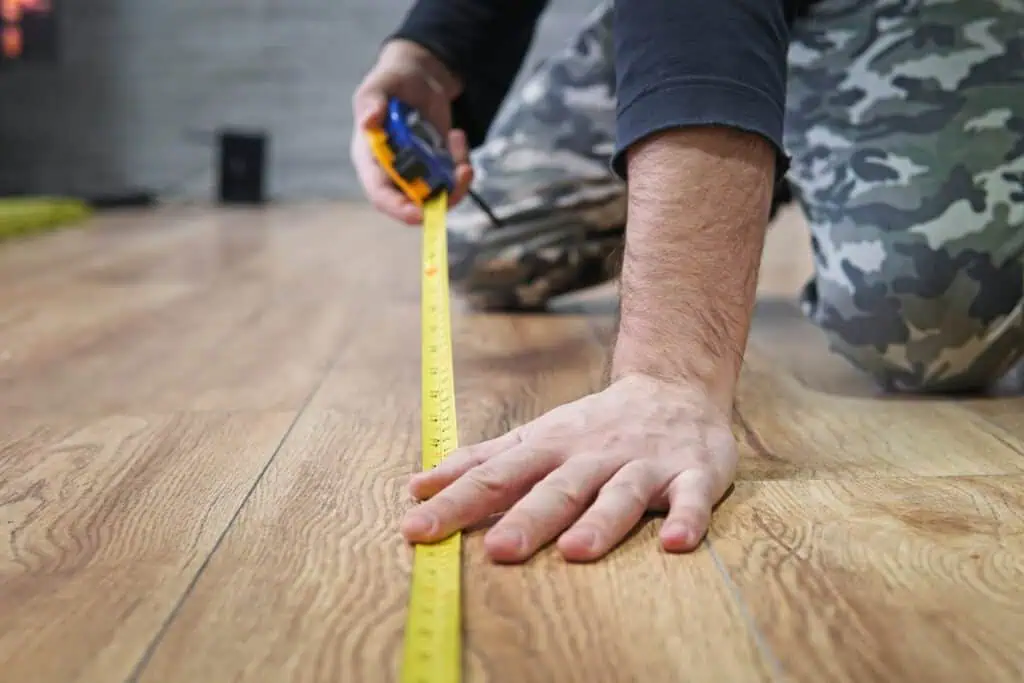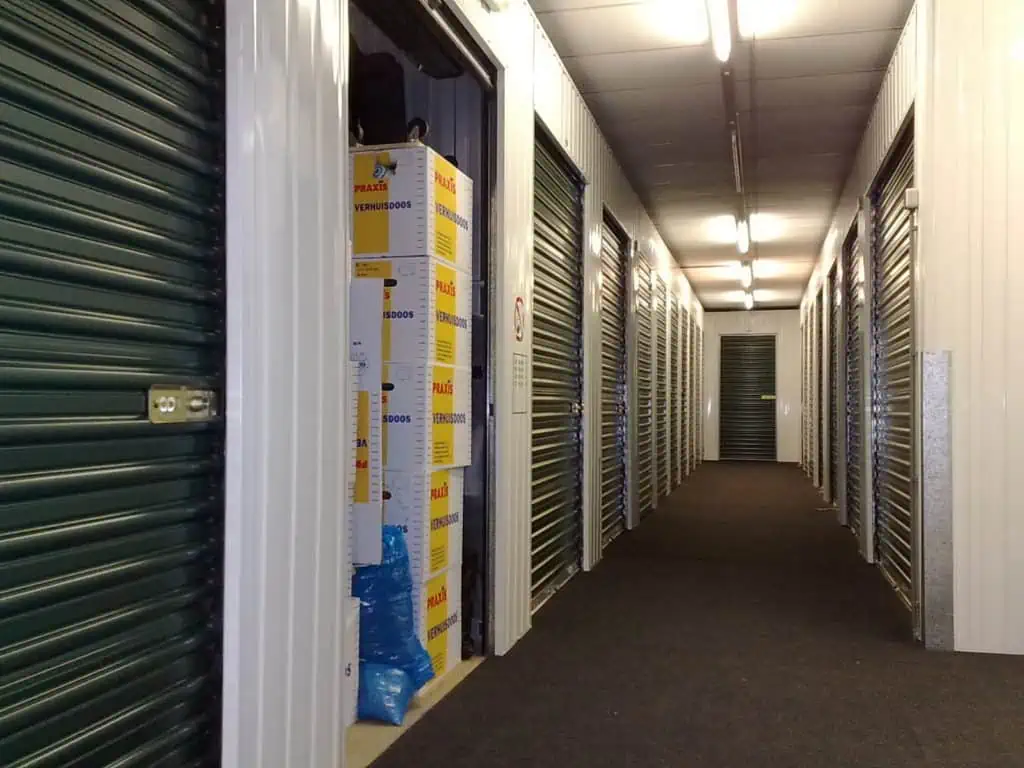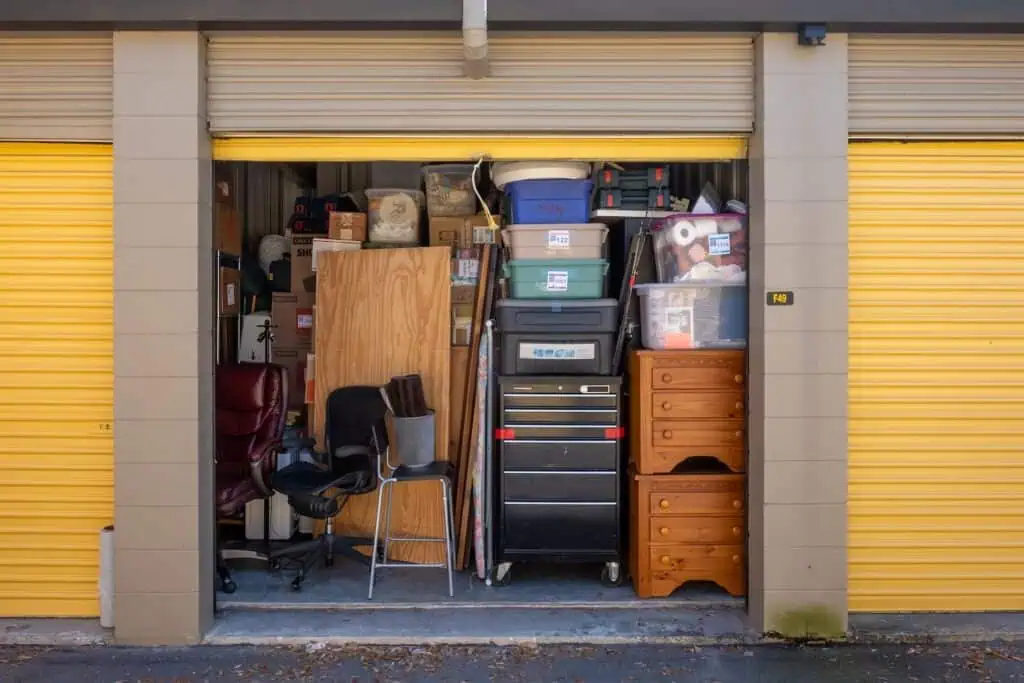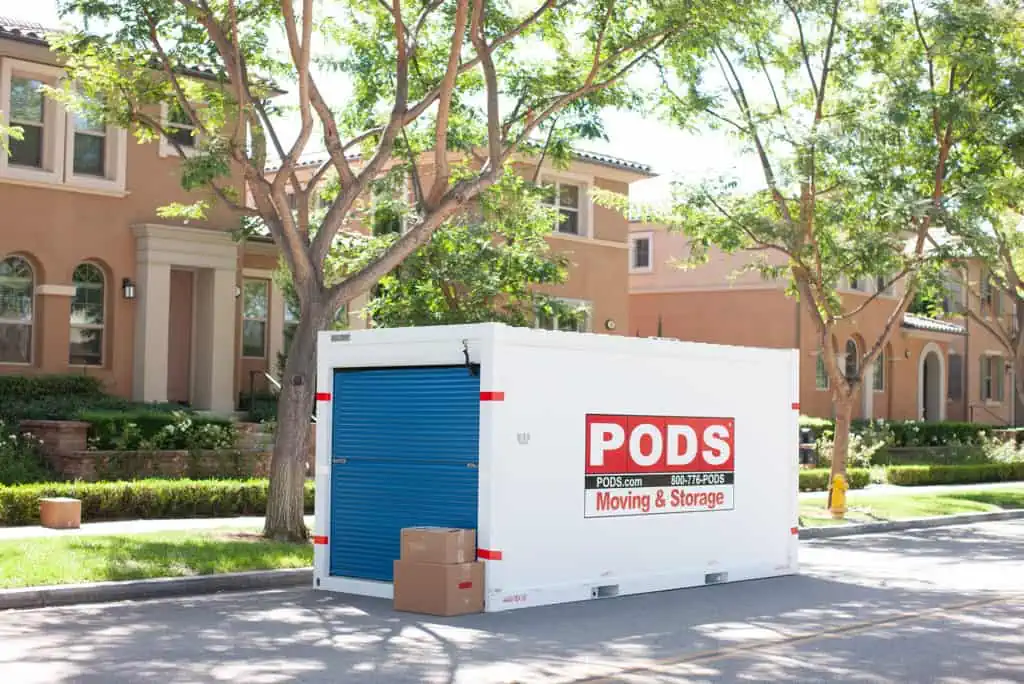There are a hundred reasons you might need self-storage. Moving and remodeling are the most common. There is one reason to avoid self-storage. It can get expensive quick.
Unless you’ve got money to burn, you’ll want to find the smallest unit that will still fit all your stuff. But looking at an apartment full of furniture and books and clothes and electronics you’re one hundred percent likely to end up asking yourself: What size storage unit do I need to fit all this?
How To Estimate What Size Storage Unit You Need
The obvious and unhelpful responder would say that estimating the space you need depends on how much stuff you have. Someone more helpful would tell you it depends on how many rooms you have. This is because furniture takes up a lot of space, but people typically put the same type of items together (beds in bedrooms, for example). So figuring out what size unit you’ll need will be based largely on the number of (furnished) rooms in your place.
Pro Tip: Storage units generally have 8-foot ceilings, so you can stack stuff pretty high — as long as you are careful!
Dormitory room
If you’re putting the stuff from your dorm into storage, chances are you won’t be taking much, if any, furniture. In this case, you can likely get away with the smallest of the units out there, either 4’x 5’ or 5’x5’. Even if you’re storing your bicycle, snowboard, and mini-fridge, you should be good to go.
Studio
Suppose your furnished place consists of a bed with a mattress, dresser, sofa, coffee table, and a modest dining set. In that case, you’re looking at a 50-60 sq. ft unit. Any more, like an entertainment center, bookcases, or a desk, and you’ll want to consider an extra 10 sq. ft. or so.

See prices for local moving labor. Read real customer reviews. Easily book your help online.
One-bedroom apartment
With furniture from the bedroom, living room, and kitchen/dining room to go with all your boxed-up clothing, books, and other knick-knacks, plan on at least 75-80 sq. ft. If you have amenities at your place like a balcony you use as outdoor storage, that also might warrant another 5-10 sq. ft. or so.
Two-bedroom apartment
Another bed, another dresser, another desk…you get the idea. And if your second bedroom isn’t just a guest room, you’re also dealing with a whole room full of another person’s belongings. This also means there might be more chairs, a more spacious couch, or more bookshelves. Look for 100 sq. ft. to store it all.
Three-bedroom apartment/two-bedroom house
The larger your place, the more difficult it becomes to get an accurate idea of how much storage space you need. Nevertheless, for most people, 150 sq. ft. will suffice. If you don’t have a lot of large pieces of furniture and your home doesn’t have a basement or attic you use for storage, you may be able to get away with a smaller and less costly unit.
But what if my studio is crammed with stuff?
If you have a massive L-shaped sofa and a couple of recliners, or if you can’t take the legs off your dining table, or you have exercise equipment, a big barbeque grill, patio furniture, and anything else that’s unwieldy and hard to stack, you may need a bigger unit.
“If you are still unsure what size unit you need when you go to the storage facility, admit it! It’s a common problem that they will surely understand.”
On the other hand, if you consider yourself a minimalist and have a more lightly-furnished place, you might be able to go smaller than the standard size. Either way, if you have a couple of moving pros handling the job of loading up your storage unit, the chance of everything fitting increases.
But unless you have a life-sized stuffed elephant, or your furniture is fit for a mouse, the correct size of storage unit will probably fall under the normal spectrum.
To help you get a clearer idea of how much space your stuff might require check out this storage calculator our friends over at PODS have created.
Can I Measure How Much Room I Need at Home?
Instead of simply going by the above guidelines, or relying on the virtual measurements of the online storage calculator, you can actually figure out how much storage space you’ll need in real-time right in your own home. All you need is some floor space, a few meters of masking tape, and a bit of patience.
Clear a corner of your living room (or whatever room has the most space for you to use) and mark off a square that equals the size of the storage unit you think you’ll need. This will give you a good visual of the space you are affording yourself.
If you are already in the process of packing up your stuff, great! Start piling your boxes into that corner, along with your couch, your bookcase, your TV stand, and whatever else you’re thinking of putting into the storage unit. If it all fits pretty well, your estimation was a good guess. If not, now you know you need a bigger unit.
Note that storage units can vary in height, but your standard 8-foot ceiling makes for a reliable model, giving you an idea of how much you can cram into that taped-off corner of your living room or bedroom if you stack stuff up to the top.
How Much Does a Storage Unit Cost?
The monthly cost of your unit depends on a few things. The most obvious one is size, but temperature control, climate control, 24-hour access, and whether your unit is on the first floor or not all go into the equation. Location is another major variable: storage costs more in California than in Kansas.
Our friends over at Sparefoot tell us that “the current average price to rent a self-storage unit in the United States is $85.30 a month, as of July 2024.” This however is the average across all sizes and types of self-storage, all across the country.
Keep in mind that self-storage, though pricey, is a highly competitive industry, and those who want your business often throw in attractive extras, like your first month heavily discounted or free, complimentary use of one of their moving vehicles, off-season specials, and discounts for longer-term contracts. Remember, however, that there is always fine print. Know what you are actually committing to, and for how long, in exchange for those freebies.
You should also know that self-storage facilities will assume zero responsibility for damage or loss to your stored belongings in most cases, regardless of the circumstances. If you do want it covered, you’ll be required to pay a monthly insurance fee, underwritten by a third party insurance company. It’s how the industry is allowed to operate, for now, so take this into consideration when renting a unit.
Can I Put a Car in a Self-Storage Unit?
There are two things to consider. First, is your car of a size that fits in a storage unit you can find in your area? And second, is there a self-storage facility around willing and able to accommodate a car?
To find the answer to those questions, start by measuring your vehicle. If you don’t have a tape measure, a quick internet search should tell you your vehicle’s length.
“Storage units generally have 8-foot ceilings, so you can stack stuff pretty high — as long as you are careful!”
Then, ask the storage unit companies nearby if they’re willing to store your car. Some facilities have outdoor units, but not all those allow storage of vehicles, likely due to the assumption that there is oil and gas inside, and flammable liquids are generally disallowed. You may have to search for a vehicle-specific storage facility, and there’s no guarantee there’s one in your area.
What Should I Not Put in a Unit?
As we just mentioned, flammable liquids of any kind are a no-go. But animals, vegetables, and anything that can spoil/go bad are also items on the list.
However, even if that list feels obvious to you, there are some finer details involved with each category of items you shouldn’t store in these units.
- Animals: Alive or dead, they’re not allowed. Stuffed animals like your childhood Snoopy? No problem. Stuffed animals like that mounted elk’s head? Might be an issue. Check with your self-storage company. Animal feed should also be kept out of storage.
- Food: Speaking of food, asfar as the human kind foes, only the canned stuff would be allowed in. Some places will say dry pasta and rice are okay, but those can be draws for pests, so it’s best to avoid it even if technically allowed by a specific company.
- Flammables: Basically anything that is used for fuel (propane, gasoline, lighter fluid, camping stove fuel cans), anything meant to be lit (lamp oil, fireworks, matches), or anything under pressure (spray paint, hair spray, cooking oil, cheez whiz) are all disallowed. Hazardous materials like paint, paint thinner, fertilizer, motor oil, car batteries, cleaning products, ammonia, and bleach are also typically not storable.
- Plants: All of them, along with soil, peat moss, seeds, sprouts, bulbs, and even dried flowers can’t be stored. Likewise, check any outdoor/gardening equipment for dirt and moisture. A little leftover water in a watering can or a garden hose can lead to mold, bacteria, and some nasty smells over time.
If you are not sure if you can store something you have, ask. And be aware that no matter what any given self-storage rep might say, if something bad happens the fine print will say that the facility is not liable in any way for any damage caused by your stuff or anyone else’s. So play it safe.
Pro Tip: Non-flammable liquids are often given the okay, but on the off-chance something leaks you’ll decide too late that it wasn’t worth it.
How Do Storage Containers Compare to Self-Storage?
In recent years, there’s been a rise in the popularity of portable storage containers. Offering convenience and flexibility, storage containers canbe an attractive alternative to traditional self-storage. But are they cost-effective?
Putting your stuff into storage:
A portable container company like PODS will drop off your storage container at your home, then pick it up when it’s full and take it away to their storage facility. Convenient, yes, but it will cost you more than just a flat storage fee.
Note that you’ll need a wide and fairly level space to accommodate that container. The truck dropping the container off also needs space to maneuver. If you don’t have a driveway, and can’t get permission to have a container placed curbside or in your building’s parking area, you may be out of luck.
Keeping your stuff in storage:
We’ve already seen that self-storage units average about $85 a month. Portable storage can be comparable if you keep the container on your property. Keeping your container in a facility will run you extra. Like self-storage, monthly costs of portable storage will vary according to season, location, and type of storage.
See prices for local moving labor. Read real customer reviews. Easily book your help online.
Accessing your stuff:
If you need to take just a few things out of storage, having a self-storage unit wins for both convenience and cost. Your self-storage facility might only be open during certain hours, but accessing your unit is generally free.
If you keep your storage container at the company facility, accessing that container can involve both a scheduled appointment and an extra payment. Of course, none of this applies if you keep the container on your own property.
Taking your stuff out of storage:
As with putting your stuff into storage, portable containers are more convenient when taking your stuff out of storage. You may have to compromise on the delivery time during the busy summer season, but as with loading, unloading your portable storage unit can be done over several days, from right outside your door.
Clearing out your self-storage unit can also be done at any time within your contract period, but again, the process takes time and gas money.
Tips for Your Self-Storage Unit
- Take pictures of your storage unit, inside and out, before you move anything in. Then show your pictures to the self-storage rep in the office. You don’t want to try to defend yourself later for something you didn’t do, or things like damage and rust that were already present in the unit.
- Plan ahead when you are filling up your unit. If you think you might need certain things at some point – your snowboard and boots, for example – put those items where you can easily reach the
- If you are still unsure what size unit you need when you go to the storage facility, admit it! It’s a common problem that they will surely understand. Request the smallest unit you think you might need, then ask if they will let you switch to a bigger one if you find you can’t fit everything in. They’ll probably be happy to let you upsell yourself.
- Be aware of potential price increases when your initial contract runs out. These companies know you likely won’t want to move all your stuff out of their facility and into another one somewhere else, so when your contract is up they may up your monthly fee. Avoid such an increase by paying in advance for as long as you think you’ll be there. And ask right off the bat whether they will reimburse you if you remove all your stuff early.
There are a hundred reasons why you might need to store things for a while, but before you start laying out hundreds of dollars for that convenience, think about the value of what you are putting in that unit. You may be better off getting rid of all that old furniture or other knickknacks by selling or donating them.
But if you do decide to entrust your things to a storage unit, you’re now well armed with the information to make sure you can get one that can handle it all!

